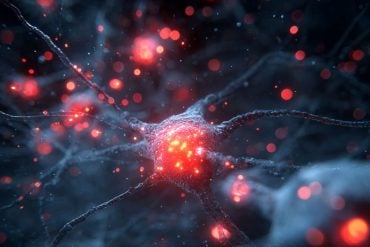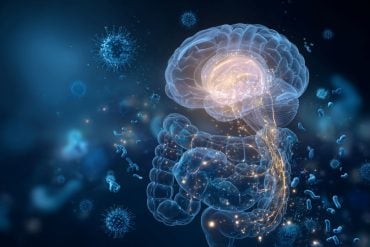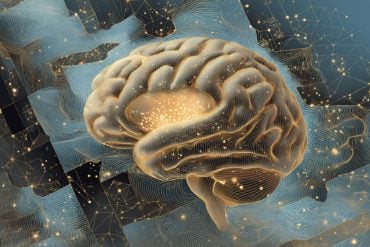Summary: Researchers have pioneered a method to simultaneously measure electrical signals from 128 brain regions in conscious rats. Using this technique, they observed the effects of psychedelic drugs, LSD and ketamine, on the brain’s neural oscillations.
Despite their different modes of action, both drugs induced similar wave patterns across the brain. This synchronization might offer insights into understanding consciousness and potential research models for psychoses.
Key Facts:
- The study found that while LSD and ketamine impact different brain receptors, they produce similar wave patterns, indicating synchronized neural behavior.
- This synchronized neural activity might be more linked to the psychedelic experience than the activity of individual neurons.
- The observed wave patterns may serve as a valuable research model for studying psychoses and the neural basis of consciousness.
Source: Lund University
Researchers at Lund University have developed a technique for simultaneously measuring electrical signals from 128 areas of the brain in awake rats. They have then used the information to measure what happens to the neurons when the rats are given psychedelic drugs.
The results show an unexpected and simultaneous synchronization among neurons in several regions of the brain.
The idea that electrical oscillations in the brain could be used to teach us more about our experiences was conceived several years ago. Pär Halje and the research team was studying rats with Parkinson’s disease that had problems with involuntary movements.
The researchers discovered a tone—an oscillation or wave in the electrical fields—of 80 hertz in the brains of the rats with Parkinson’s disease. It turned out that the wave was closely connected to the involuntary movements.
“A Polish researcher had observed similar waves after giving rats the anesthetic ketamine. The ketamine was given at a low dose so that the rats were conscious, and the equivalent dose in a human causes psychedelic experiences.
“The waves they saw were in more cognitive regions of the brain than in the rats with Parkinson’s, and the frequency was higher, but that still made us consider whether there were links between the two phenomena.
“Perhaps excessive brain waves in the motor regions of the brain cause motor symptoms, while excessive waves in cognitive regions give cognitive symptoms,” says Pär Halje, researcher in neurophysiology at Lund University.
The research team that Pär Halje belongs to has developed a method that uses electrodes to simultaneously measure oscillations from 128 separate areas of the brain in awake rats. The electrical waves are caused by the cumulative activity in thousands of neurons, but the researchers also succeeded in isolating signals from individual neurons.
“For several of these areas, it is the first time anyone has successfully shown how individual neurons are affected by LSD in awake animals. When we gave the rats the psychedelic substances LSD and ketamine, the waves were clearly registered.”
Collective wave patterns
Despite ketamine and LSD affecting different receptors in the brain—they have completely different ways into the nervous system—they resulted in the same wave patterns even if the signals from individual cells differed. When the rats were given LSD, researchers saw that their neurons were inhibited—they signaled less—in all parts of the brain.
Ketamine seemed to have a similar effect on the large neurons—pyramidal cells—which saw their expression inhibited, while interneurons, which are smaller neurons that are only collected locally in tissue, increased their signaling.
Pär Halje interprets the results seen in the study, which is published in Communication Biology, to mean that the wave phenomenon is connected to the psychedelic experience.
“Activity in the individual neurons caused by ketamine and LSD looks quite different, and as such cannot be directly linked to the psychedelic experience. Instead, it seems to be this distinctive wave phenomenon—how the neurons behave collectively—that is most strongly linked to the psychedelic experience.”
Research model for psychoses
Even if what is happening in individual cells is interesting, Pär Halje argues that the whole is bigger and more exciting than the individual parts.
“The oscillations behave in a strange way. One might think that a strong wave starts somewhere, which then spreads to other parts of the brain.
“But instead, we see that the neurons’ activity synchronizes itself in a special way—the waves in the brain go up and down essentially simultaneously in all parts of the brain where we are able to take measurements.
“This suggests that there are other ways in which the waves are communicated than through chemical synapses, which are relatively slow.”
Pär Halje emphasizes that it is difficult to know whether the waves cause hallucinations or are merely an indication of them. But, he argues, it opens up the possibility that this could be used as a research model for psychoses, where no good models exist today.
“Given how drastically a psychosis manifests itself, there ought to be a common pattern that we can measure. So far, we have not had that, but we now see a very specific oscillation pattern in rats that we are able to measure.”
Can the waves reveal more about consciousness?
There is also a dream—that the model will help us in the hunt for the mechanisms behind consciousness and that the measurements may be a way to study how consciousness is shaped.
“In light of the development of AI, it is becoming increasingly important to clarify what we mean by intelligence and what we mean by consciousness. Can self-awareness occur spontaneously, or is it something that needs to be built in?
“We do not know this today, because we do not know what the required ingredients for consciousness in our brains are. This is where it is exciting, the synchronized pattern we see, and whether this can help us to track down the neural foundations of consciousness,” says Pär Halje.
About this consciousness and psychopharmacology research news
Author: Pär Halje
Source: Lund University
Contact: Pär Halje – Lund University
Image: The image is credited to Neuroscience News
Original Research: Open access.
“5-HT2AR and NMDAR psychedelics induce similar hyper-synchronous states in the rat cognitive-limbic cortex-basal ganglia system” by Pär Halje et al. Communications Biology
Abstract
5-HT2AR and NMDAR psychedelics induce similar hyper-synchronous states in the rat cognitive-limbic cortex-basal ganglia system
The profound changes in perception and cognition induced by psychedelic drugs are thought to act on several levels, including increased glutamatergic activity, altered functional connectivity and an aberrant increase in high-frequency oscillations.
To bridge these different levels of observation, we have here performed large-scale multi-structure recordings in freely behaving rats treated with 5-HT2AR psychedelics (LSD, DOI) and NMDAR psychedelics (ketamine, PCP).
While interneurons and principal cells showed disparate firing rate modulations for the two classes of psychedelics, the local field potentials revealed a shared pattern of synchronized high-frequency oscillations in the ventral striatum and several cortical areas.
Remarkably, the phase differences between structures were close to zero, corresponding to <1 ms delays. Likely, this hypersynchrony has major effects on the integration of information across neuronal systems and we propose that it is a key contributor to changes in perception and cognition during psychedelic drug use.
Potentially, similar mechanisms could induce hallucinations and delusions in psychotic disorders and would constitute promising targets for new antipsychotic treatments.








